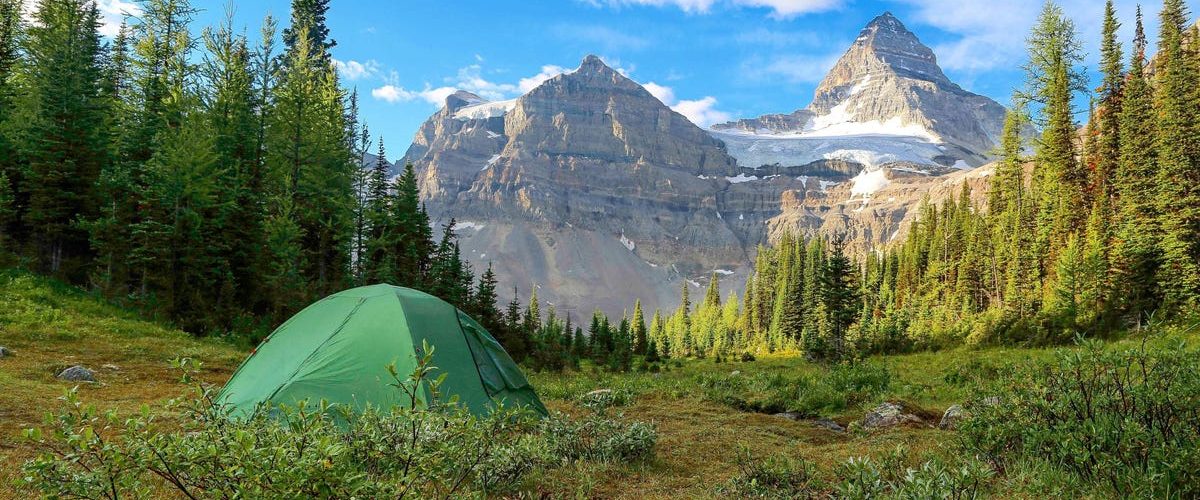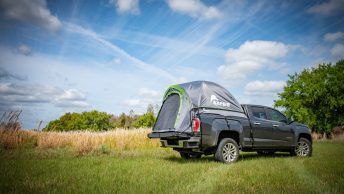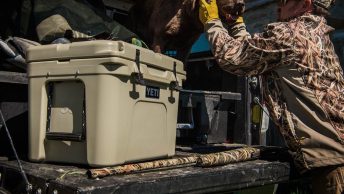Contact with poisonous plants can put an abrupt end to your camping trip. They hide sneakily between the lush green bushes and trees of the great outdoors. They can cause uncomfortable rashes, gastrointestinal problems, and even death.
Below is some helpful information about some of the most common poisonous plants you may encounter on a camping trip, how to spot them, and what to do if you came into contact with them.
Tips on Camping Around Poisonous Plants
The Most Common Poisonous Plant Species
The Sumac Family
Botanists will agree that of the types of poisonous plants you’ll encounter while camping, poison ivy is the most common list. It’s most common in eastern and midwestern states and found everywhere except Alaska and Hawaii, extending to other continents.
The most notable characteristic of identifying poison ivy while camping is that its leaves grow in three groups.
Poison Ivy
An age-old adage goes, “leaves of three, let them be,” which is good advice for spotting and avoiding poisonous plants. The leaves look like teardrops pointed and attached to a long stem. They generally grow close to the ground but can also grow quite tall, up to six feet. Thankfully, coming into contact with poison ivy is not fatal but can make you quite uncomfortable for 2-3 weeks.
The sap from poison ivy causes a burning rash across your skin and sticks to anything, and getting it on your camping gear will also lead to a rash. If you encounter poison ivy on your campsite, don’t burn it, as the vapor is dangerous if inhaled and can cause a rash to spread over your entire body. The rash can be treated with corticosteroid or hydrocortisone cream.
You can also make a paste with baking soda and warm water and apply this to the rash too. If you accidentally touch poison ivy, wash the area immediately with soap and water and your clothes and anything else the plant touched. Don’t scratch it because this will lead to infection. If the rash spreads across your body or onto your face, seek out the nearest emergency room for medical attention.
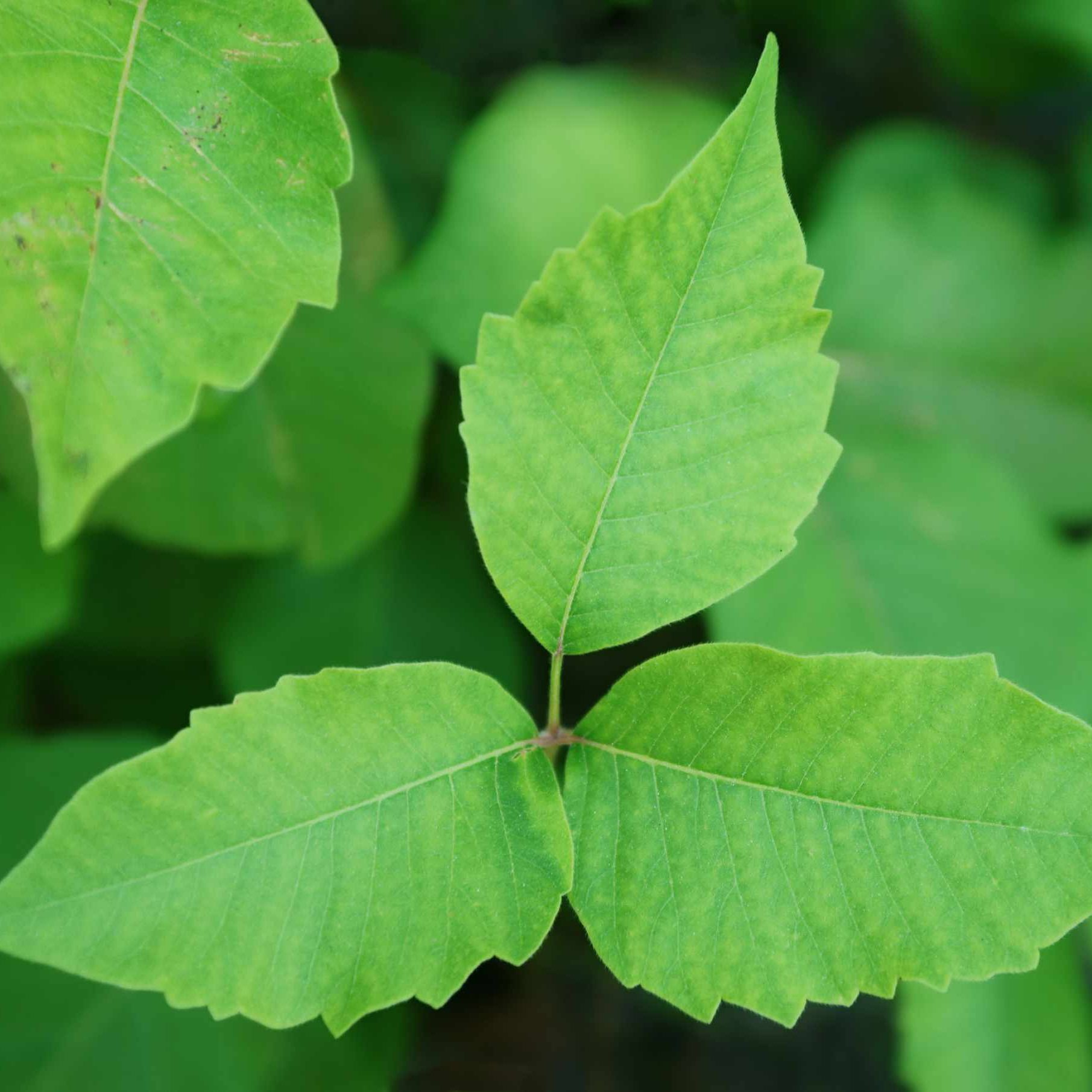
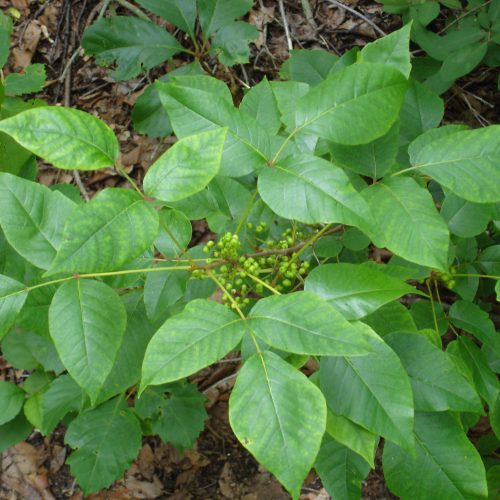
Poison Oak
Another plant that grows in clusters of three is poison oak. It contains the same chemical Urushiol in its sap as poison ivy and will also cause a rash if touched. The leaves of poison oak are smooth along the edges but may also have divots like poison ivy.
You can treat your rash the same as with poison ivy by applying hydrocortisone cream or calamine lotion and baking soda to dry out sores that may develop. Poison oak is most commonly found in the western United States from California, Mexico to British Colombia, southeastern states like Cape May, but rarely in midwestern states.


Poison Sumac
Poison sumac, is a close relative of poison ivy and poison oak. Its found primarily in swampy areas, such as Cape May, Ocean City, and Somers Point, but can also be seen in hardwood and pinewood forests such as those in the Garden State. This big boy grows like a tree and can reach 30 feet, but you may also find some growing close to the ground.
It has 7 to 13 leaves across its stem, making it aesthetically different from poison ivy and poison oak. Its leaves are smooth, and its stem is redder in color, which helps it be easily identified. It can also host tiny white fruits amongst its leaves. Sumac releases an oil known as Urushiol that causes a rash like poison ivy and poison oak and can be treated similarly.


Poisonwood
Moving further south to areas such as Louisiana, Florida, and Mississippi introduces the poison family’s second cousin, poisonwood. The poisonwood tree outdoes its 30-foot cousin by growing an extended 5 feet and hosts glossy green leaves 6-10 inches long and outlined in tell-tale yellow.
Avoid this tree because it is the most deadly of the Sumac family. Its sap can cause painful blisters almost immediately, and if it comes into contact with your eyes can even cause blindness. It sprouts yellow, berry-like fruit poisonous to the touch, and ingesting these can be fatal.


Umbrella Shaped Plants
Giant Hogweed
Giant hogweed has pretty white, umbrella-like flowers in clusters of 50 and stems with white hairs and purple blotches. It lives up to its name by growing up to 15 feet and can be found in rich, wet soil in ditches, streams, and farms. Most commonly in northeastern states such as Maine, Oregon, Washington, Maryland, Ohio, Michigan, Virginia, Vermont, New Hampshire, and New York.
Contact with the sap makes your skin hypersensitive to ultraviolet light, so if you touch this plant, get out of the sun immediately. Your skin could otherwise blister, burn, or even scar, and contact with the eyes can damage your vision. Blisters will form within 48 hours and become dark and pigmented. Scars can last anywhere from a few months to a few years, and you may experience long-term sensitivity to sunlight.
If you come into contact with giant hogweed, wash the affected area with soap and cold, not war, water as soon as possible, and stay out of the sun for the next 48 hours. If you get sap in your eyes, rinse them with water and wear sunglasses. Skin reactions can be treated with topical steroids. Otherwise, contact a physician as soon as possible.


Poison Hemlock
Poison hemlock resembles giant hogweed and hosts clusters of white, umbrella-like flowers, smaller than giant hogweed. It is native to North America and is highly poisonous to humans and animals. Class B noxious weed is a toxic biennial plant that forms part of the carrot family. For this reason, it can often be confused with wild carrot as it has small, white carrot-shaped roots that look edible.
You can identify wild carrots from poison hemlock by the purple-red blotches on the poison hemlock’s stem, ridged fruit, and height – 3-7 inches tall. Wild carrot has one bunch of flowers and one stem, while poison hemlock has multiple stems that branch out with collections of flowers. Poison hemlock contains toxic alkaloids that affect the nervous system and can cause burning in the mouth, nausea, vomiting, confusion, rapid heartbeat, seizures, and death by respiratory paralysis.
There is no cure for hemlock poisoning. If you have trouble breathing, your doctor will try to assist in attempting to clear your airways or putting you on a ventilator. Symptoms appear 20 minutes to 3 hours after ingestion, and touching the plant can cause a severe skin reaction but is not deadly. Its sap also makes your skin sensitive to sunlight and can lead to blistering and skin discoloration that can last several months. All parts of the plant are poisonous, and even dead poison hemlocks retain their toxicity for up to 3 years.


Wild Parsnip
While you might enjoy some roasted parsnip as part of your Sunday lunch, wild parsnip is different. Wild parsnip is a parsley family member that includes carrot, celery, and dill. It grows up to five feet tall and has yellow, umbrella-like flowers that form small clusters.
It’s widespread over fields, pastures, and roadsides in New York and other northern parts of the US, and those who come into contact with it will also break out into blisters due to the skin’s heightened sensitivity. Wash the affected area and cover the rash with a wet cloth. You can also apply a steroid cream but use this sparingly as long-term use can lead to stretch marks, bruising, and thin spidery blood vessels on the skin.
Cover the affected area with clothing to protect it from the sun. The burns should improve after about three days and will dry and flake off like sunburn, while discoloration and sunlight sensitivity can last for up to 2 years.


Poisonous Berries
Suppose you want a snack while on a hike or camping, it’s safest to avoid white, yellow, or green berries. While there are exceptions, it is best to leave these color berries alone unless you are with someone who knows for sure.
Another general rule is to avoid berries that grow in clusters, while solo berries are usually fine. Berries in pods or bulbs, with spines or pointy hairs, pink, purple, or black spurs, or ones that grow on three-leaved plants (like poison ivy) should be avoided. Ingesting these can lead to diarrhea, vomiting, and nausea and dehydrate you. Other symptoms include dizziness, blurred vision, or convulsions.
Blue Virginia
Plants such as the dark blue Virginia creeper and the dark purple pokeweed grow tall and have berries that resemble blueberries. They look delicious, but you should not eat these. You can distinguish the Virginia creeper from poison ivy because the Virginia creeper has five leaflets while poison ivy has three. In eastern and central North America, eastern Mexico and Guatemala, and southern Canada, you can find it.


Pokeweed
The pokeweed’s dark purple berries sit on bright pink spurs atop a tall, bushy plant. It’s native to the eastern United States on roadsides, in pastures, and on the borders of woods. The berries, roots, and plants are poisonous, and contact with these can cause nausea, vomiting, cramping, stomach pain, and diarrhea and make you thirsty and need to go to the bathroom a lot. Wash your skin as soon as possible and if you’ve ingested its berries, get yourself to a hospital to get your stomach washed out.


Deadly Nightshade’s Devil’s Cherries
Deadly nightshade’s blackberries are also known as Devil’s Cherries, indicating how deadly this plant is. It has white or purple flowers and is found in warmer, tropical regions. All parts, especially the berry, are poisonous and, if ingested, cause blurred vision, rash, headaches, slurred speech, and more severe symptoms such as hallucinations, convulsions, and eventually death.


Mistletoe
While mistletoe may be great for kissing under, it is a parasitic plant that survives on other plants such as ornamental, timber, and crop trees. You can find them from New Jersey to Florida and the west of Texas. Its small, white berries may cause pain, nausea, vomiting, and diarrhea, and large ingestions can lead to seizures, hypertension, and cardiac arrest.
The dwarf mistletoe is found in southeastern Alaska, Honduras, and Hispaniola. Spot it with small, oval, evergreen leaves and white berries in ball-shaped masses. If mistletoe comes into contact with your skin, it can cause itching, inflammation, and pain.


Ryan is an outdoor enthusiast and gear expert originally from Montana who spent four years living in Boston, after stints in India, Rwanda, Senegal, and elsewhere. He and his wife are on a new journey to travel the world and blog about their adventures at Passions and Places.

